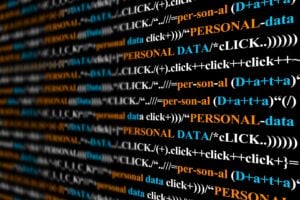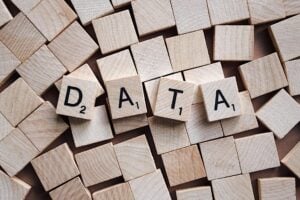Big Government
With data volumes continuing to grow, data governance is becoming an increasingly important cog in the data science machine, especially as new laws and regulations are passed at the state and federal level. But just how do you define it? Often, it is confused with a similar phrase, data management. Gartner’s definition is the following: Data governance encompasses a collection of processes, roles, policies, standards, and metrics that guarantee the efficient and effective use of information, allowing an organization to reach its goals.
It is critical that, as Delphix puts it in its blog on the subject, “What is Data Governance and Why is it Important?,” “robust governance follows internal data standards and policies to ensure data is used with integrity. It stipulates who can take what action, in what situations, upon what data, and what methods. As new data privacy laws and regulations are passed, it will become critical for organizations to develop, implement, and follow ethically sound data governance frameworks. A concrete data governance framework covers operational roles and responsibilities, as well as tactical and strategic objectives.”
Everyone in the organization is ultimately responsible for and involved with effective data governance. Delphix notes that often, for larger companies, a data governance committee might be set up and made responsible for setting goals and priorities, architecting the governance model, gaining budget approval, and selecting appropriate technologies to use. From there, there are senior data owners, data stewards or data architects, and data operators or custodians. It is the committee that ultimately approves the policies and standards that govern data within the company.
Setting Standards
Since its establishment, the Data Governance Institute (DGI) has provided a benchmark for data governance best practices. Here are some of its fundamental principles of good data governance:
1. Define Responsibilities: An organization must define its data governance team with clear job descriptions, responsibilities, and duties. This includes determining who is accountable for cross-functional data-related decisions, processes, and controls.
2. Define Accountabilities: Data governance programs must define accountabilities in a way that introduces checks-and-balance between business and technology teams to ensure everyone is working effectively towards a common goal.
3. Ensure Audibility: Data-related decisions, controls, and processes must be auditable and accompanied by documentation to support compliance requirements. Furthermore, the framework must support the standardization of enterprise data governance.
4. Ensure Integrity: Everyone in the organization must work with integrity when dealing with each other and data. They must be honest in discussions and feedback around data-related decisions.
5. Ensure Transparency: Data stewardship processes require transparency, so all participants and auditors know when and how data-related decisions and controls are introduced into processes.
6. Support Change: Lastly, effective data governance programs must support proactive and reactive changes made by management to ensure the proper handling of data processes.
Data Challenges
In the All Things Innovation blog, “Solving the Data Bottleneck,” some in the analytics and data science community likened the flow of data to that of a firehose on full power. There’s just an issue, however, of effectively directing that flow of information. This has led to more of an emphasis on data governance and data democratization, which is a process of shifting the mindset and responsibility of data analytics from the data scientists or IT, and moving beyond the outdated silo process, to all users across the organization.
In the All Things Insights article, “Data Quality Challenges Raise Questions as Community Eyes Future,” we looked at key results from the H1 2023 Analytics & Data Science Spend & Trends Report. Respondents feel strongly that analytics and data science are becoming more integrated into both corporate and operational decision making. Still, there are some challenges. An interesting challenge to currently explore is that of “data quality.” When asked, “Which are your organization’s top challenges in using data to inform decision-making?,” the majority of respondents (55.9%) said that data quality was the top challenge.
It’s All About the Data
Data governance best practices can offer numerous benefits to organizations by helping them manage and leverage their data effectively. We asked ChatGPT to identify key ways in which data governance can benefit an organization:
- Data Quality Improvement: Data governance ensures that data is accurate, consistent, and reliable. This leads to improved data quality, which in turn enhances the trustworthiness of decision-making and reporting.
- Compliance and Risk Mitigation: Data governance helps organizations comply with data privacy regulations (e.g., GDPR, CCPA) and industry-specific standards. By managing data responsibly, organizations reduce the risk of data breaches, fines, and legal issues.
- Data Consistency: Consistent data definitions and standards are established through data governance, preventing confusion and data conflicts across different departments or systems.
- Efficient Data Management: Data governance streamlines data management processes, reducing redundancy and ensuring data is stored, accessed, and used efficiently.
- Cost Reduction: Efficient data management and improved data quality can lead to cost savings by reducing the time and effort required to clean, reconcile, and maintain data.
- Improved Data Security: Data governance practices include access controls, encryption, and data masking, which enhance data security and protect sensitive information from unauthorized access.
- Data Ownership and Accountability: Clear roles and responsibilities for data ownership are established, ensuring that individuals or teams are accountable for the data they manage.
- Data Transparency: Data governance promotes transparency in data handling and usage, which fosters trust among employees and stakeholders regarding how data is used.
- Data Integration: Data governance helps in integrating data from various sources, enabling organizations to gain a holistic view of their operations and customers.
- Data Retention and Archiving: Organizations can define data retention policies to manage data throughout its lifecycle, ensuring compliance with legal requirements and efficient storage management.
- Data Cataloging: Data governance often involves creating data catalogs, making it easier for employees to discover and access relevant data assets.
- Support for Analytics and Business Intelligence: Well-governed data provides a solid foundation for analytics and business intelligence initiatives, facilitating better insights and data-driven decision-making.
The Data Keeps Flowing
Implementing data governance best practices requires commitment, resources, and a well-defined strategy. It should involve cross-functional internal collaboration and standards, with input from IT, legal, compliance, and business teams. While it may require an initial investment of time and resources, the long-term benefits to an organization’s data management and decision-making processes are substantial.
Video courtesy of IBM Technology
Contributor
-

Matthew Kramer is the Digital Editor for All Things Insights & All Things Innovation. He has over 20 years of experience working in publishing and media companies, on a variety of business-to-business publications, websites and trade shows.
View all posts






































































































